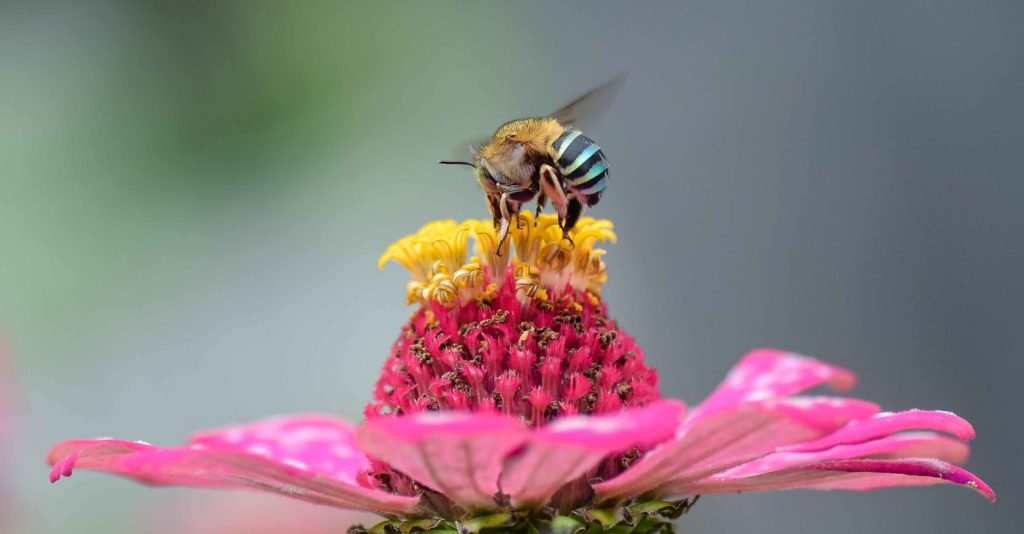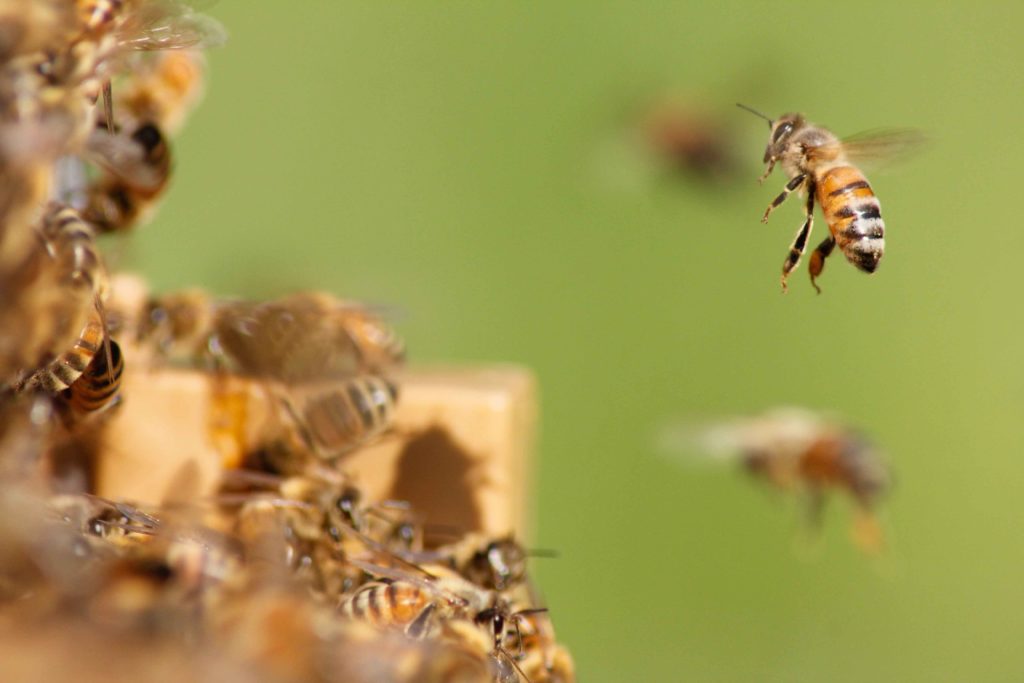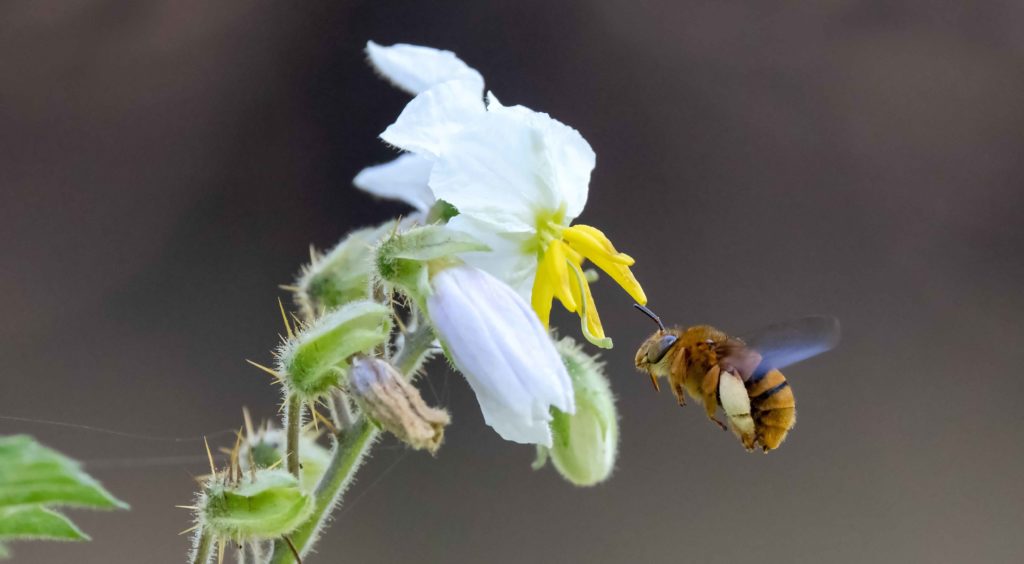Honey bee may pose threat to native bees
A Curtin University study has found the introduced European honey bee could lead to native bee population decline or extinction when colonies compete for the same nectar and pollen sources in urban gardens and areas of bush. The research found that competition between our native Australian bees and the introduced European honey bee could be particularly intense in residential gardens that are dominated by non-native flowers. This problem occurred when the bees shared the same flower preferences.
Under these conditions, it would appear that European honey bees can outcompete Australian bees for nectar and pollen resources. Honey bees are very abundant and effective foragers with the ability to exploit a wide range of flowers. Native bee species are valuable pollinators of many crops, from macadamias and mangos to tomatoes, blueberries and watermelons. In some cases, they can be more effective pollinators than honey bees.

Competitive advantage
Lead author, Forrest Foundation scholar Kit Prendergast, says the research was conducted over two years in urban gardens and areas of native vegetation on the Swan Coastal Plain at Perth. It revealed a complex relationship between native and introduced bees.
“Not all native bee species were impacted,” she says. “But when native bees preferred the same flower species as honey bees or were of larger size – meaning they needed more food – this was when honey bees had a negative impact. This occurs due to resource competition. Honey bees were more successful at exploiting food resources from flowers. This doesn’t leave enough nectar and pollen to support native bee populations.”

Strength in numbers
Unlike native Australian bees, European honey bees live in colonies of tens of thousands. They’re also better at telling their mates where flower patches are. The “waggle dance” involves combining movement and vibrations to communicate. Honey bees also use scent.
“Competition from honey bees was particularly fierce in residential gardens,” Prendergast says. “Here there are lower proportions of the native wildflowers that our native bee species have co-evolved to forage on. This impact of competition with a super-abundant, domesticated and feral introduced bee, when combined with pressures from habitat loss as a result of increasing urbanisation and agriculture, especially livestock agriculture, places some native bee species at risk of becoming endangered or even extinct.”

What you can do to help
Prendergast says planting more flowering plants, particularly those preferred by vulnerable native bee species, could help prevent a decline in numbers. Controlling the density of honey bees would also be critical in reducing the pressure on native bee populations.
“Native bees are an integral and important part of any ecosystem,” Prendergast says. “European honey bees pose an added threat to the many native bee species that are already at risk of declining numbers or extinction due to increasing urbanisation.”
For more information on what to plant in your own garden to help our Australian bees, download Bee Friendly. It’s a free planting guide for European honey bees and Australian native pollinators, thanks to AgriFutures Australia.









